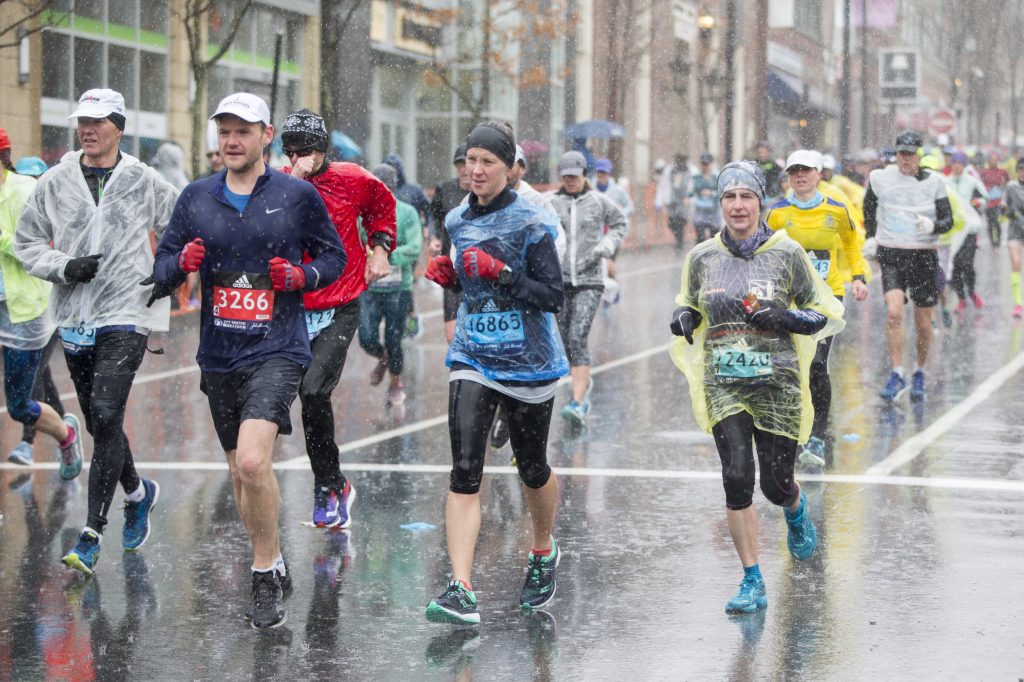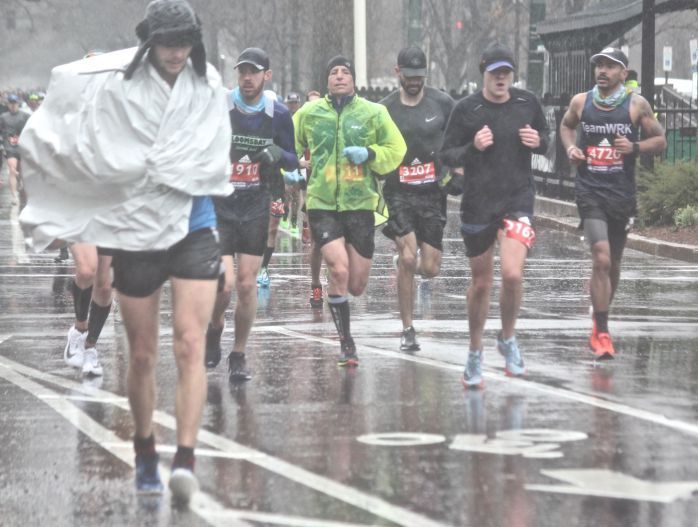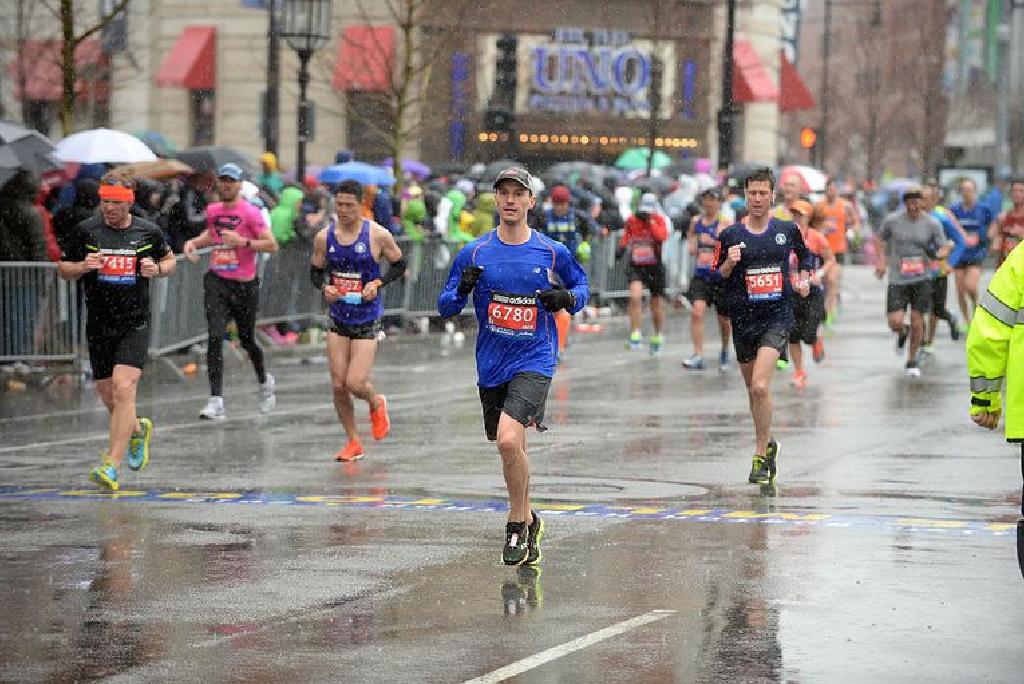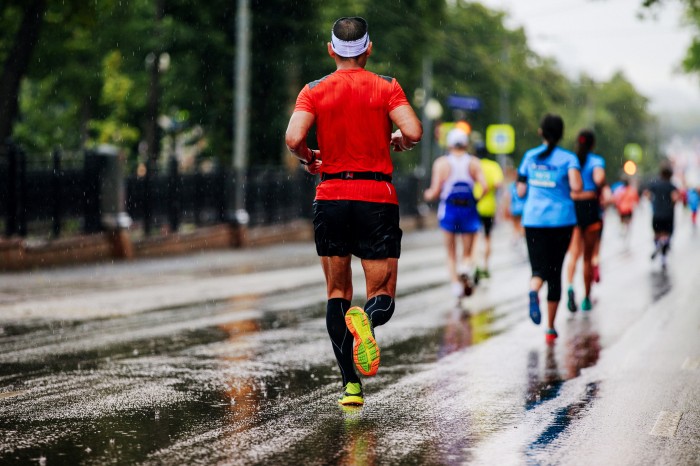- 3470 Wilshire Blvd, Floor 9, Los Angeles, California, 90010, USA
- [email protected]
Summer Strides: How Female Coaches and Expert Advice Can Transform Your Running Season

The weather has always been a wildcard when it comes to outdoor events, but this year’s 4K brings a new layer of unpredictability. With a course that could swing between dry and hard-packed to wet, slick, and muddy depending on the day’s conditions, preparation and adaptability are more crucial than ever.
Whether you’re a seasoned runner or lacing up for your first organized race, understanding how to adjust for both dry and wet conditions can make a significant difference in both your performance and safety. To help all participants prepare, our coaching team has put together key insights—and we’re fortunate to hear directly from Matt Lambet, one of our most experienced running coaches, on what to keep in mind.
Understanding the Dual Nature of the Course

This year’s 4K route is designed to challenge runners with both elevation changes and variable footing. Dry conditions offer a fast course, ideal for setting personal bests. However, if the rain hits before or during the event, parts of the track could become muddy and waterlogged. That means runners need to be prepared for both scenarios—often with little time to adjust on race day.
As Coach Matt Lambet says, “Being ready for variable conditions is about more than gear—it’s about mindset. We train in every weather not just to build toughness, but to learn how our bodies move and respond across conditions. Race day is just the culmination of all that practice.”
Advice for Dry Conditions

When the weather is favorable and the ground is dry, the course becomes faster, but not necessarily easier. Here’s how to approach dry ground:
1. Wear Lightweight Footwear:
Dry conditions allow for lighter shoes with more aggressive outsoles designed for speed. Ensure your shoes offer some traction in case of loose gravel or dust.
2. Hydrate Strategically:
Don’t let the cooler temperatures fool you. Dry weather, especially with wind, can be deceptively dehydrating. Begin hydrating the day before and sip water throughout the morning before the race.
3. Focus on Pacing:
With fewer obstacles underfoot, it’s easier to go out too fast. Stick to your pacing plan and use the downhills and flats wisely.
Advice for Wet Conditions

Wet courses require more caution, control, and tactical decision-making. Safety and stamina trump speed when conditions get slippery.
1. Choose the Right Shoes:
Opt for trail shoes or road-to-trail hybrids with solid grip. Avoid overly worn soles as they can cause slips, especially on inclines or muddy sections.
2. Shorten Your Stride:
A shorter, quicker stride helps maintain balance and traction. This change can reduce the chance of slipping and help conserve energy.
3. Dress for Moisture:
Moisture-wicking, quick-drying fabrics are essential. Avoid cotton, which holds water and can cause chafing. Consider a light waterproof jacket if rain is expected during your run.
4. Watch Your Foot Placement:
Stay alert and aim for firmer ground. Avoid puddles where you can’t see the bottom—especially in grassy or uneven areas.
5. Warm Up More Thoroughly:
Wet and cold conditions can make muscles stiff and more prone to injury. A dynamic warm-up becomes even more critical on these days.
Mental Preparation: The Key to Race Day Success

No matter the weather, your mindset is your strongest asset. Runners often overlook mental conditioning, but it’s just as vital as any training run.
Coach Lambet emphasizes, “Whether the course is dry, wet, or somewhere in between, your attitude at the starting line sets the tone for your entire race. Embrace the challenge—don’t fear it. Every step in tough conditions builds resilience, and resilience wins races.”
Tips from the Coaches: Pre-Race Checklist

Check the Forecast the night before and morning of.
Bring Two Pairs of Shoes: One for dry, one for wet—choose last minute based on the conditions.
Use Body Glide or Anti-Chafe Balm if running in the rain.
Arrive Early: Give yourself time to adjust to weather, do warm-ups, and test footing.
Don’t Overthink It: If you’ve trained, you’re ready. Adjust, adapt, and run your race.
Post-Race Recovery

After the race, proper recovery becomes even more important if conditions were wet. Change into dry clothes immediately to avoid getting chilled. Hydrate, stretch, and take a warm shower as soon as you can. If the course was muddy, clean and inspect your shoes to extend their lifespan.
Final Thoughts

The unpredictable nature of this year’s 4K only adds to the challenge—and the fun. Whether you’re hoping to hit a new PR or simply finish strong, the key is flexibility. Prepare for both the best and the worst, and know that each step, dry or drenched, is a part of your running journey.
As Coach Lambet reminds us, “Great runners aren’t made on perfect days. They’re made when it’s tough, when it’s raining, when the footing is unsure—and they keep going anyway.”
